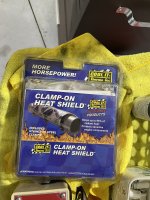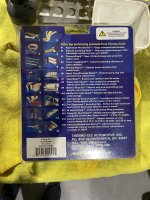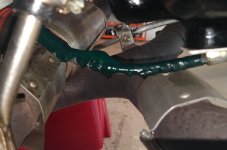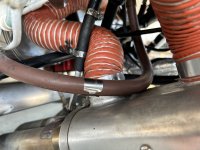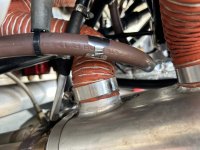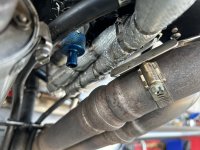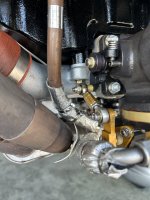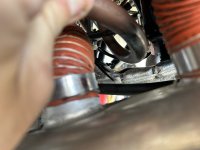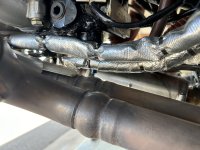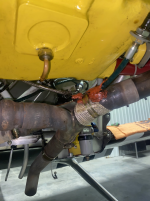Oooh, let me play!
I see something nobody has mentioned (I think). That screw’s factory end is on the back side of the heat shield…the hot side, right up against the exhaust pipe. Isn’t that transmitting heat right up through the screw body to the adel clamp? Into the rubber cushion? And into (and melting) the nylon in the nut?
Maybe, maybe not. Still…
I’m in the camp that says, without scientific analysis, that there are still plenty of ‘sensical’ reasons not to do it this way. If it makes Charlie Berens say, “Well, cripes, that there’s yer problem,” at some point, scientific analysis becomes…well, rather academic.
And I do respectfully tip my hat to this group’s scientists, analysts, and academicians.
To Brother Dan, I say: Excellent catch!
I see something nobody has mentioned (I think). That screw’s factory end is on the back side of the heat shield…the hot side, right up against the exhaust pipe. Isn’t that transmitting heat right up through the screw body to the adel clamp? Into the rubber cushion? And into (and melting) the nylon in the nut?
Maybe, maybe not. Still…
I’m in the camp that says, without scientific analysis, that there are still plenty of ‘sensical’ reasons not to do it this way. If it makes Charlie Berens say, “Well, cripes, that there’s yer problem,” at some point, scientific analysis becomes…well, rather academic.
And I do respectfully tip my hat to this group’s scientists, analysts, and academicians.
To Brother Dan, I say: Excellent catch!



